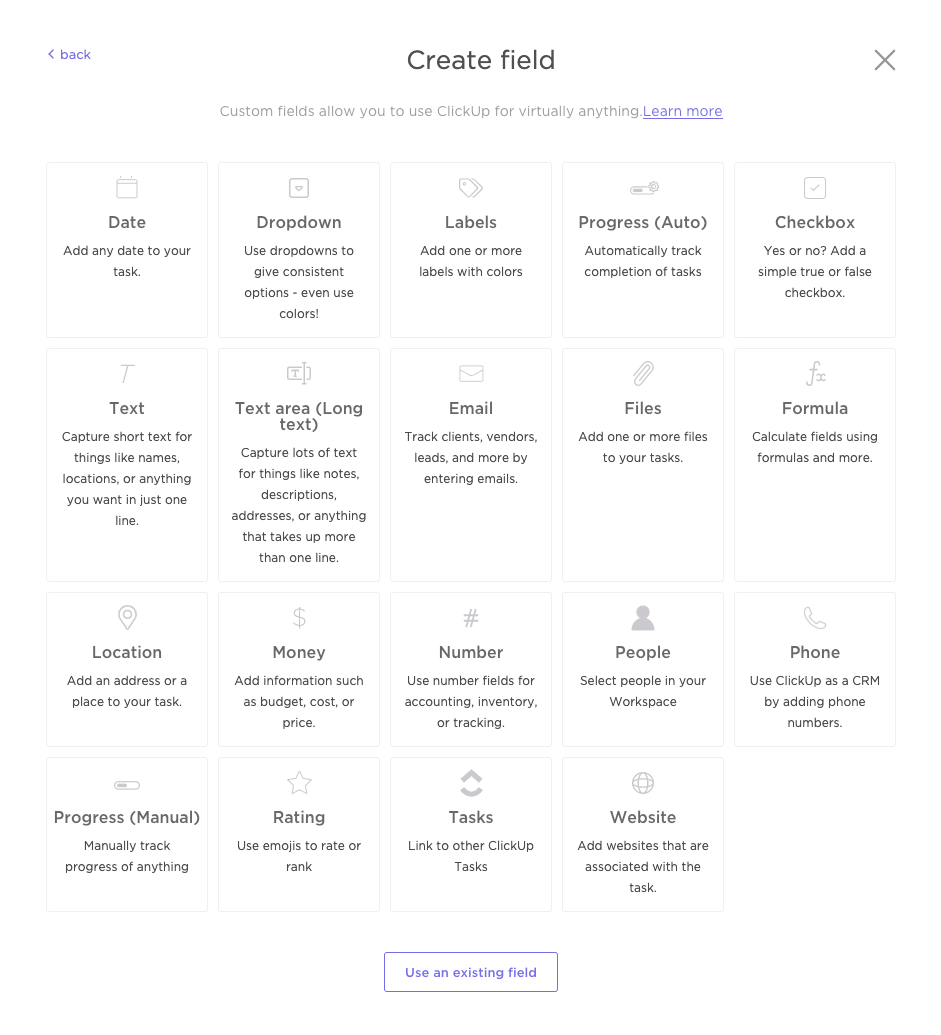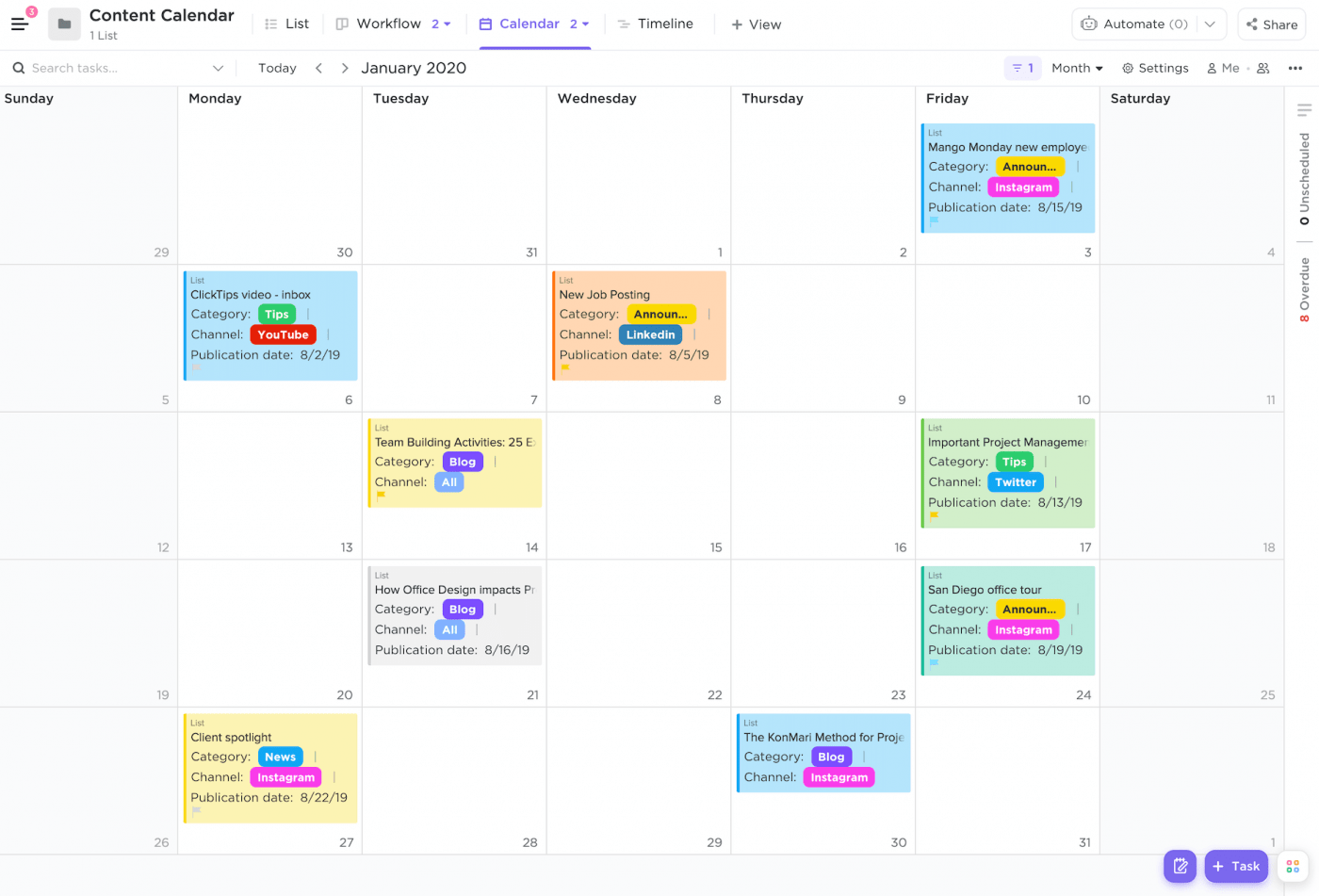

Quincy Smith is the co-founder of TEFL Hero, a training and resource company for people interested in teaching English as a second language. The former teacher currently lives in Shanghai with his partner and dog.
About Us
TEFL Hero is a digital business that provides training and resources to teachers looking to teach English either online or abroad.
Content is our biggest marketing channel by far and we use ClickUp to manage every aspect of it with an extremely small staff.
A well-designed content management system is like a flywheel – once it’s up and running, it will send your website targeted traffic as long as you keep it maintained. Outside of finding quality writers, the biggest hurdle companies face with content is designing a system that makes it easy to research, write, and maintain content over time.
In this post, I’ll pull back the curtain on the system we’ve implemented within ClickUp that makes it easy to publish and manage as much content as we want (and has helped our blog become our biggest marketing channel).
Our Content System in a Nutshell
On its face, our content system is simple – we want to publish as much relevant content as we can without bottlenecks or losing track of older posts that might need to be updated.
In reality, there are a lot of moving parts that make this possible and we needed a platform that could support our current needs as well as where we see ourselves in 3 years.
Goals
There are 3 primary goals for our content system:
- Easy to access – we rely on writers and editors to manage our content and most of the time they only need access to our content workspace; we need to be able to compartmentalize access without it being complicated.
- Easy to understand – we need to be able to add users to the system and have them understand the layout and process without much onboarding.
- Easy to scale – we expect our content needs to grow over time and we need a system that will support that.
Requirements
- Flexible – we need a platform that will allow us to assign multiple authors, track dates, record URLs, and utilize automations – in short, it should be able to everything and more
- Scalable – we needed to be able to filter content, change statuses in bulk, and move content from list to list regardless of how many pieces we had
- Plays nicely with others – we need a system that will integrate with other major tools like email, Slack, Zapier etc.
Roles
Our content management system is supported by 4 roles:
- Researcher – creates the brief for each piece of content to provide a roadmap for the writer
- Writer – responsible for writing the draft of each piece of content
- Editor – often the same as the researcher, they review the drafts and double check formatting + adherence to the brief
- Publisher – the person responsible for taking a piece of content from ClickUp and uploading it our blog
Where ClickUp Fits In
ClickUp is the hub of our content management system.
It links our different management views with our briefs and published articles, provides easy to understand updates to all parties, and houses regular tasks to support and manage all posts.
When it comes to content, we have a dedicated list with 2 main List views.
Content flows top to bottom depending on stage and moves to the ‘Live’ list when it’s completed.
ClickUp Must Haves
There are a few things that we consider “must haves” when it comes to powering our content system in ClickUp.
Every one of these plays a big role in keeping our process consistent and efficient.
Templates
Templates are a lifesaver for us and we rely on them to make brief creation easier and ensure consistency in the end result.
We created different templates for different types of content and use custom statuses to keep track of them in our primary content view.

Using templates in ClickUp to speed up work processes and ensure consistency
Dependent Subtasks
Each template includes a variety of dependent subtasks that ensures a piece of content is researched, written, and published in the right order.
Subtasks allow us to outline and assign different parts of the content to different people and alert them automatically when their task has opened up. Each subtask has at least 1 checklist item to complete before it can be marked as done.
Custom Fields
We rely heavily on Custom Fields to track and display relevant data like author, word count, brief URL, and status.
Combinations of fields are pulled through both of our List views and allow us to monitor, review, and group content easily. They have made it incredibly easy to get a high level look at content progress as well as provide our writers and staff with the information they need to do their jobs
Before ClickUp, a writer would need to find the brief link in Trello (or even their email!) and then our publishers would update all dates in a Google Sheet. Now, Custom Fields help us keep all of that information in one place and display it in the best way for that user.

Custom Field Types in ClickUp
Views & Filters
Views are where I spend most of my time and we use 2 primary layouts:
- Content that is being planned or written
- Content that is live
These give us the best high-level overview of where we are in terms of our content schedule and make it easy for us to sort all of our content by different custom fields.

Using ClickUp’s Calendar view for content management
From Ideation to Publication
So now you’ve seen the setup, but what does it actually look like for a piece of content to make its way from an idea to a live blog post?
We use a simple 5 step process that is reflected in our stages:
Researching
All of our content research is handled in-house and we use Google Docs to organize and store our content briefs. The brief is stored within the content task via a custom URL field and makes it easy for the authors to get started without needing to search around.
Writing
Once a brief is ready to be passed off to a writer, we mark the ‘Create Brief’ subtask as complete and change the status from ‘Brainstorm’ to ‘Draft’.
The dependent subtasks mean the writer gets alerted automatically (assuming they’ve been assigned), but we also occasionally tag them in the main task comments.
Editing
Once the initial draft is done, the writer changes the status to ‘Edit’ and marks their subtask (and checklist items) as complete.
From there, the piece enters a pretty thorough review process but all edits and questions are kept in the Google Doc for simplicity.
If any changes are required, we will also tag the writer in the main task comments to ensure they get the message.
Publishing
After editing, the status is moved to ‘Upload’ and the respective subtask is unlocked. A different team member is alerted and is responsible for uploading the finished piece and ensuring the formatting matches the Google Doc brief (with correct images, links, and spacing).
The post is saved as a draft and passed to a manager via another status change – this time to ‘Publish’. The manager reviews the draft and either publish it immediately or schedules it for a later date.
Maintaining
As the amount of content grows, maintaining the relevance and accuracy of that content becomes both more important and more of an effort. To help us stay organized, we rely on our second List view that displays custom date fields for when a post was published, reviewed, and last updated.
Using this, we are able to filter and sort content systematically for regular reviews. If we need to update a blog post, we can then move it back to ‘Draft’ and update the necessary status + subtasks.
Tip: We’re considering adding a Long Text Custom Field to better track review + update notes. The idea is that the more a piece of content is reviewed for performance the more valuable a running list of insights + changes will be.
Lessons Learned
After having used variations of this system for a few years, there are a few big takeaways to help you get it up and running without too many issues.
Have SOPs for Everything
Remember the goal of having a content system that is easy to use?
SOPs (standard operating procedures) do most of the heavy lifting when it comes to showing users how each step gets done.
We keep our SOPs in 2 places internally:
- A central workspace where all SOPs are stored via easy-to-understand naming conventions.
- Whenever possible, we try to include the link to the relevant SOP in the task – this means new users don’t have to click around and search for instructions – they are usually included as a custom URL.
Our SOPs are based on a Google Doc with a corresponding video – the doc has the steps and instructions needed to execute the task and the video provides an over-the-shoulder look for extra clarity.
Revisit Your Content Regularly
I already touched on how important content maintenance is, but I really cannot overstate how much revisiting your old content can help increase your traffic and revenue.
We review our content every 3 months (so if you published something in January then you’d review it every 3 months starting in April), and if we find that it’s not performing or needs to be updated with new information then we add it back to our writing queue—it’s that simple.
After all, you wouldn’t let a car engine go without maintenance and you surely wouldn’t let it underperform without getting it fixed. So why not build regular reviews into your process to help you get the most out of your investment?
Process in Batches or Use Routines
Getting results from your content efforts isn’t easy and it’s even harder to stay on top of everything at scale. To combat this, we use routines and batch processing whenever possible, including:
- Creating content briefs in groups as opposed to 1 by 1
- Editing on Tuesdays and Thursday mornings
- Reviewing content drafts and publishing every Friday (yes, it’s fine to publish multiple pieces on the same day!)
This helps us to stay organized and be super efficient with our time as we aren’t bouncing back and forth between tasks.
Getting Started
If you’re new to content marketing or have been surviving on a diet of Trello and Google Sheets, then this post was probably a lot to digest. To help you get you started I’ll leave you with 2 tips:
- If you’re already building content but want to get more organized, start by creating a master list of all posts (like we did with our Live view) and review them systematically for opportunities. This will help you see more results with less work and provide a solid foundation to grow in the future.
- If you’re starting from scratch then focus on your first 5 pieces of content – do all the research and writing yourself and then build your ClickUp system around your personal preferences. This will make it easy to explain later and you’ll have the knowledge of what it takes to create a good piece of content.
Good luck!


